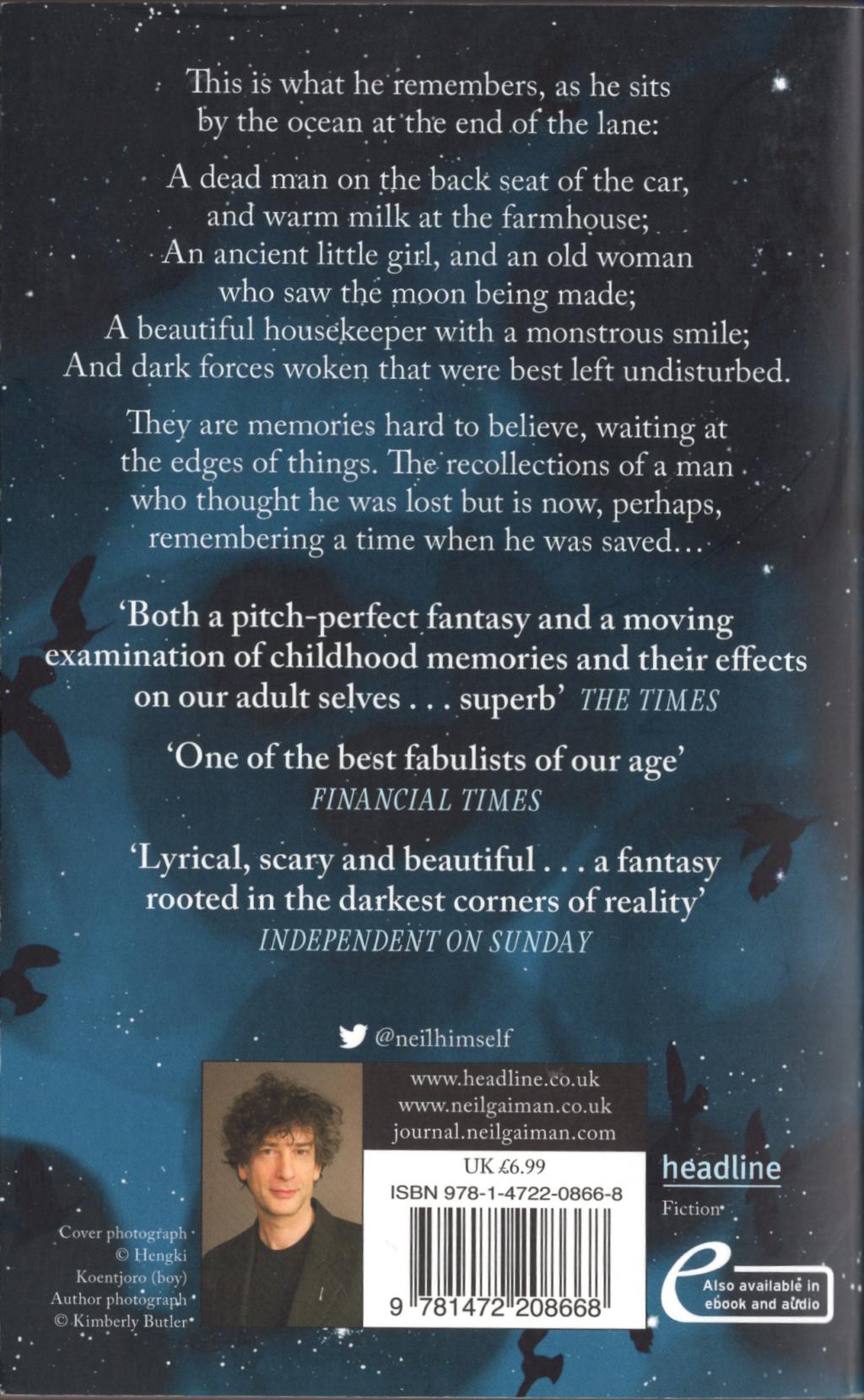
Children explore." But in my view by far the most impressively realised and impactful scene is the one in which the narrator's father breaks down the door of the bathroom to dump the terrified boy in a freezing bath and hold him under the water.

The book is orchestrated with a good deal of this pat defensive counterpoint – "Adults follow paths. They made me feel that they were like secrets, masonic, mythic secrets to adulthood." Adult stories never made sense, and they were slow to start. They weren't adult stories and they weren't children's stories. Here he is on page 71, writing his manifesto in the voice of his narrator: "I liked myths. Which wouldn't matter (and doesn't, in terms of those millions of fans) except that I also find Gaiman much more interesting as a writer than this somewhat laboured "mythic" story permits.

You'd be right in surmising that I find all these flapping tent-monsters and worms in your feet and beautiful governesses slightly gauche. And the only thing that Ursula Monkton is scared of, the only thing that will get rid of this kind of a monster, are the formidable "hunger" birds… The malevolence stays and assumes the human form of the tall blonde Ursula Monkton, the narrator's evil live-in nanny, who wears a ragged grey and pink dress that also flaps. Later, the boy removes the worm but doesn't quite get it all out. She says it's common.") and the monster places a worm into the arch of the narrator's foot.

In the ensuing struggle, the narrator lets go of Lettie's hand as she chants the binding spell (though these Hempstocks don't call them spells: "Gran doesn't hold with none of that. Out in the fields, they encounter the monster: "some kind of tent, as high as a country church, made of grey and pink canvas that flapped in the gusts of storm wind… a lopsided canvas structure aged by weather and ripped by time".


 0 kommentar(er)
0 kommentar(er)
